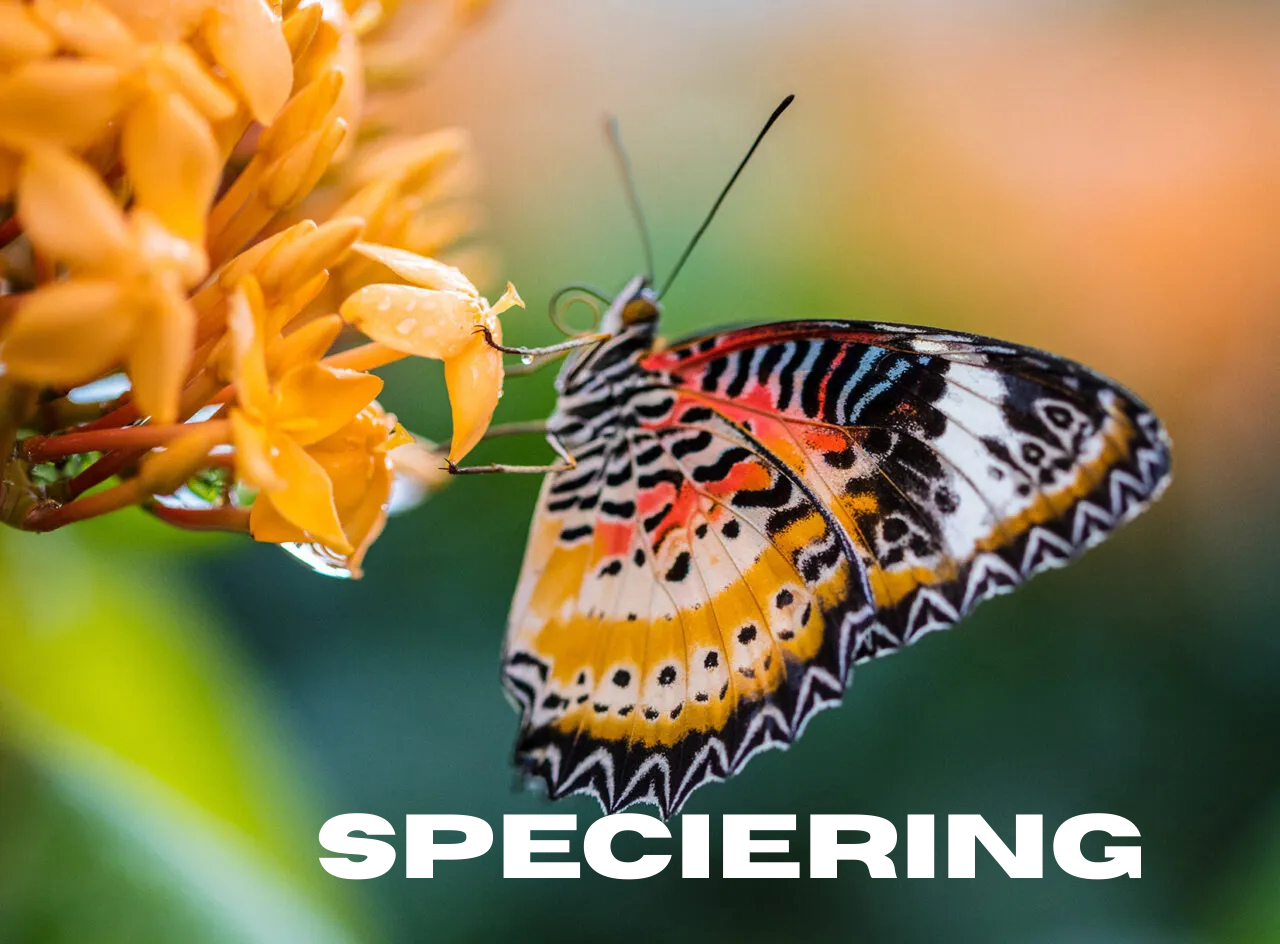Speciering: Understanding Nature’s Blueprint for Classification and Diversity
When you first hear the term speciation, it may sound like a niche scientific concept reserved for biologists or chemists. Yet, speciering is far more pervasive and influential than most realize. At its core, speciation is the process of identifying, classifying, and distinguishing different “species” or categories within a given system. While the term originates from biological taxonomy, it has grown to have applications in chemistry, environmental science, industrial processes, and even artificial intelligence. In essence, speciation is the foundation for understanding diversity, whether among living organisms, chemical compounds, or complex data sets.
The significance of speciation lies in its dual purpose: it is both a methodical approach to classification and a practical tool for informed decision-making. From identifying rare species in a tropical rainforest to determining chemical pollutants in drinking water, speciation ensures accuracy, efficiency, and consistency. As our world becomes increasingly interconnected and technologically advanced, the ability to classify and understand complex systems is more critical than ever.
The Origins and Evolution of Speciering
The word speciation comes from the Latin species, meaning “appearance” or “kind.” Originally, it was a term used in biological taxonomy to describe the identification and classification of organisms. Early naturalists and scientists sought structured ways to catalog the immense diversity of life on Earth. The Linnaean system of taxonomy, developed in the 18th century by Carl Linnaeus, was one of the first formalized methods to classify species systematically.
Over time, the concept of speciation expanded beyond biology. Chemists began using it to describe “chemical species”—distinct forms of atoms, molecules, ions, or complexes in a sample. By identifying these different forms, scientists could understand chemical behavior, toxicity, and reactivity. Today, speciation is not limited to natural sciences. Fields such as environmental monitoring, industrial quality control, and artificial intelligence increasingly rely on the principles of speciation to make sense of complex data.
Specializing in Biology and Ecology
Biology is where speciation finds its most intuitive application. Often associated with speciation—the evolutionary process by which new species arise—speciation is slightly different. While speciation creates new life forms over generations, speciation is methodological. It focuses on identifying, cataloging, and differentiating existing species based on their characteristics.
For field biologists, speciation is essential. When encountering a previously unknown frog species, researchers examine morphology, coloration, habitat, and behavior. Genetic sequencing may further reveal whether the frog represents a known species, a variation, or an entirely new species. This precise identification is crucial for understanding biodiversity, maintaining ecological records, and guiding conservation efforts.
Case Study: Galápagos Finches
Charles Darwin’s study of Galápagos finches remains one of the most famous examples. Though the finches evolved into multiple species with different beak shapes and feeding habits, identifying and categorizing these species was critical to understanding natural selection and evolutionary adaptation. Speciering allowed biologists to track these differences methodically, demonstrating evolution in action.
Conservation Implications
Misidentifying species can have serious consequences. For example, if an endangered frog is mistaken for a common species, it might not receive necessary protection, potentially leading to population decline. Speciation ensures that conservation strategies are based on accurate biological data, safeguarding both individual species and ecosystems.
Chemical Speciation: Understanding Subtle Differences
In chemistry, speciation refers to identifying and quantifying distinct chemical species within a sample. While two samples may contain the same element, the chemical forms (species) of that element can differ drastically in behavior, toxicity, or stability.
Example: Mercury
Elemental mercury (Hg⁰) is hazardous, but methylmercury (CH₃Hg⁺), an organic compound, is far more toxic and accumulates in living organisms. Through chemical speciering, scientists can determine the precise form of mercury in water, soil, or biological samples, which is essential for environmental risk assessment and human health protection.
Industrial Applications
- Pharmaceuticals: Detecting impurities or unintended chemical species ensures drug safety and compliance with regulatory standards.
- Food Safety: Identifying harmful chemical residues in products protects consumers and maintains industry standards.
- Environmental Monitoring: Chemical speciation tracks pollutants, their bioavailability, and long-term ecological effects.
By distinguishing chemical species, scientists and industry professionals can make accurate decisions, mitigate risks, and comply with safety regulations.
Tools and Techniques in Speciering
Speciation , whether biological or chemical, relies on robust methods and technologies.
Biological speciation Techniques
- Morphological Analysis: Studying physical traits such as shape, size, and coloration. While cost-effective and fast, it may misidentify cryptic species that look alike.
- Molecular Techniques: DNA barcoding and genome sequencing allow precise identification by comparing genetic material across species.
- AI and Machine Learning: Image recognition algorithms can classify thousands of species based on visual data, accelerating research and minimizing human error.
Chemical speciation Techniques
- Chromatography: Separates mixture components to identify individual chemical species.
- Spectroscopy: Measures light absorption or emission to detect molecular structures.
- Mass Spectrometry: Quantifies species accurately, often used in combination with chromatography for precise chemical analysis.
These tools have revolutionized speciering, making it faster, more accurate, and increasingly accessible to scientists and industry professionals worldwide.
Challenges in speciation
Despite its importance, speciation is not without challenges:
- Cryptic Species: Organisms that appear identical but are genetically distinct may evade morphological identification.
- Low Concentration Detection: Some chemical species exist in trace amounts, making them difficult to detect.
- Instability of Species: Certain chemical forms may change before analysis, leading to inaccurate results.
- Dynamic Classification Systems: Taxonomies and regulatory standards are continually updated, requiring continuous adaptation.
- Field and Industrial Constraints: Limited resources, expertise, and technology can hinder accurate speciation in real-world scenarios.
Overcoming these challenges often requires combining multiple methods, cross-validation, and continuous monitoring.
Environmental Science Applications
Environmental science uniquely benefits from integrating biological and chemical speciering. Accurate identification of organisms and pollutants informs ecosystem management, conservation, and public health initiatives.
Case Study 1: Wastewater Treatment
Identifying bacterial species in treatment plants is as critical as knowing the chemical forms of contaminants. Correct classification ensures effective management and pollutant removal.
Case Study 2: Heavy Metal Contamination
Lead contamination requires understanding whether lead exists as Pb²⁺ ions, lead sulfide, or other species. Each form behaves differently in the environment, influencing toxicity, solubility, and mobility.
Case Study 3: Climate Change
Tracking shifts in species distribution—both biological and chemical—helps scientists predict ecosystem responses to rising temperatures, changing precipitation, and ocean acidification. Speciation supports proactive conservation and resource management strategies.
Speciering in the Digital Age
Advances in artificial intelligence, machine learning, and big data analytics have transformed speciation:
- AI-Powered Classification: Algorithms can scan thousands of images of plants, animals, or chemical spectra to identify species efficiently.
- Citizen Science Applications: Mobile apps allow users to photograph organisms and receive instant identification, broadening public participation.
- Portable Field Devices: Miniaturized sequencers and spectrometers enable on-site analysis without central labs.
While digital tools cannot replace expert judgment, they complement human expertise, accelerating research, and improving accuracy.
Future Trends and Innovations
The future of speciation lies at the intersection of technology, sustainability, and predictive modeling:
- Real-Time, Field-Based speciation: On-site genetic sequencers and spectrometers enable immediate species identification in remote or hazardous environments.
- Predictive Modeling: Combining current species data with climate or chemical reaction models allows forecasting of future biodiversity and chemical transformations.
- AI-Enhanced Global Databases: Centralized systems could track species distributions, environmental pollutants, and evolutionary trends worldwide.
- Interdisciplinary Collaboration: Biologists, chemists, data scientists, and environmental researchers working together can tackle complex global challenges.
These trends promise more efficient conservation planning, better pollution management, and a deeper understanding of ecosystems and chemical interactions.
Conclusion
Speciation may not be a term familiar to the general public, but its influence is far-reaching. Whether classifying rare species in the Amazon, identifying toxic compounds in water, or leveraging AI to process massive datasets, the principles of speciering—accuracy, clarity, and informed decision-making—remain central.
As the world faces unprecedented environmental, technological, and industrial challenges, the ability to distinguish one species—biological or chemical—from another is more important than ever. Speciation underpins our understanding of life and matter, enabling responsible stewardship of natural resources, public health, and industrial processes. Far from being a minor technicality, speciation is a critical process that shapes how we perceive, interact with, and preserve the world around us.



